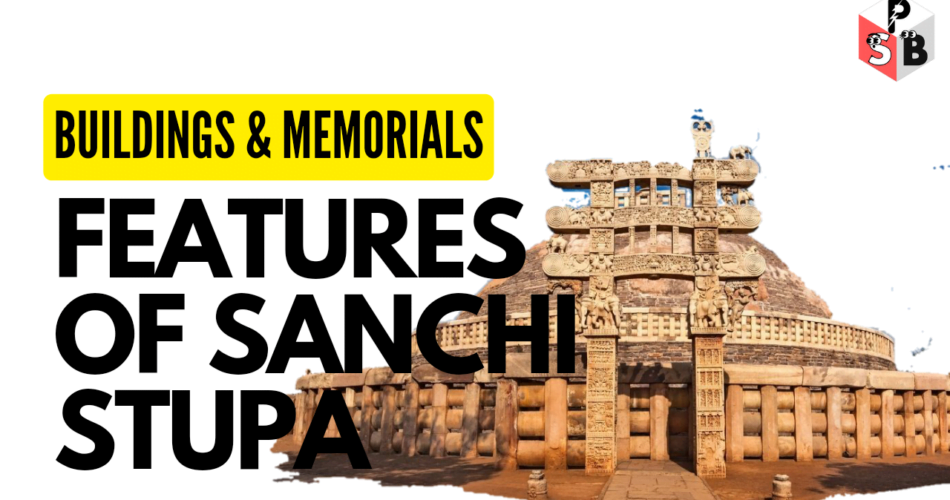Sanchi Stupa is a wonderful ancient relic located in the state of Bhopal. This group of stupa includes a large hemispherical structure and many other buildings.
The three great features of Sanchi Stupa are mainly categorized in Structural, Sculptural and Folk Traditions which are briefly explained below.
Structural Feature of Sanchi Stupa
The early strips of Sanchi are without ornamentation. Only stone altars and archways are made in it. These stone altars were like a bamboo or wooden circle. The archways standing in all the four directions were richly carved.
Worshipers entered through the eastern archway and circumambulated clockwise keeping the mound on the right. It seemed as if they were tracing the path of the sun across the sky. Later, decorations and carvings were also done on the mound of the strip.
Sculptural Features of Sanchi Stupa
Art historians had to resort to Buddha’s autobiography to understand the sculpture of Sanchi. According to Buddhist writings, Buddha attained enlightenment while meditating under a tree.
Many early sculptors tried to represent the presence of the Buddha through symbols rather than in human form. For example, the empty space became a symbol of the Buddha’s meditative state and the stupa of Mahaparinibbana.
The wheel was also widely used as a symbol. This symbolized t the first sermon delivered by the Buddha at Sarnath. In fact, it is very difficult to understand such a sculpture literally. For example, the meaning of the tree was not just a tree, but it symbolized an event in the life of the Buddha. To understand such symbols, it is important for historians to understand the traditions of the makers of these artifacts.
Folk Traditions
Many idols of Sanchi were probably not related to Buddhism. These include statues of some beautiful women. These women are shown swinging by holding a tree on the side of the archway. Initially scholars were somewhat confused about the significance of this idol as it did not seem to have any connection with sacrifice and penance. But from the study of literary traditions, he realized that this is the idol of Shalabhanjika described in Sanskrit language.
In folk tradition, it was believed that by being touched by this woman, trees used to blossom and bear fruits. Probably it was considered an auspicious symbol and that is why it was used in the ornamentation of the string.
The sculpture of Shalabhanjika shows that the people who came to Buddhism enriched Buddhism with other beliefs, practices and beliefs from their pre-Buddha and Buddhism.
Many of the symbols used in the sculptures of Sanchi certainly grew out of these traditions. For example, some very beautiful engravings of animals have been found here.
These animals include elephants, horses, monkeys and cattle. It seems that these animals were engraved to attract people. Also animals were used as symbols of human qualities. For example the elephant was considered a symbol of power and wisdom.
The idol depicts a woman amidst a lotus flower and elephants. The elephants are sprinkling water on him as if they are anointing him. Some historians associate this woman with Buddha’s mother Maya while some other historians describe her as a popular goddess Gajalakshmi.
Gajalakshmi was the goddess of good fortune who is often associated with elephants. It is also possible that the worshipers seeing these idols associate it with both Maya and Gajalakshmi.

